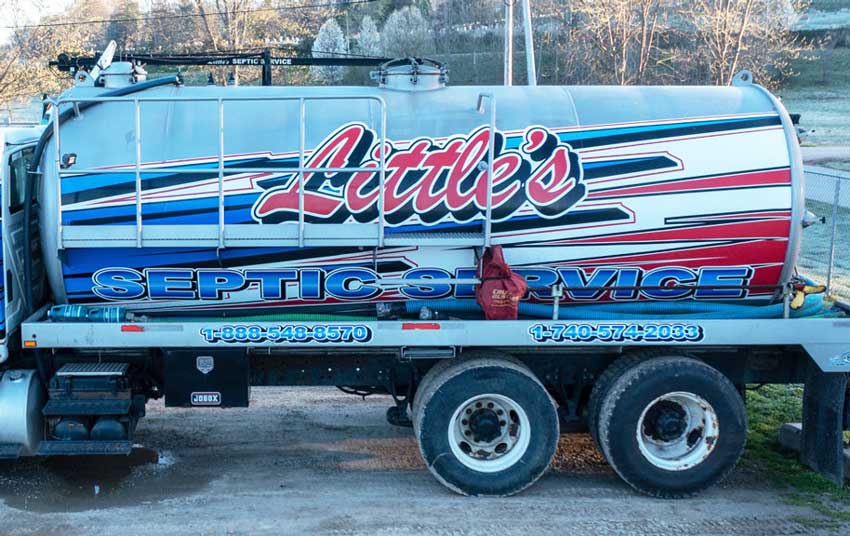The Best Guide To Stillwell Septic And Grading
The Best Guide To Stillwell Septic And Grading
Blog Article
Stillwell Septic And Grading Things To Know Before You Get This
Table of ContentsSee This Report on Stillwell Septic And Grading10 Simple Techniques For Stillwell Septic And GradingThe 20-Second Trick For Stillwell Septic And GradingFacts About Stillwell Septic And Grading UncoveredStillwell Septic And Grading Can Be Fun For AnyoneThe 9-Minute Rule for Stillwell Septic And Grading4 Easy Facts About Stillwell Septic And Grading Described
On the whole, sewage-disposal tank setup is a complicated process that calls for mindful preparation and implementation. Property owners ought to collaborate with a reliable installation team and recognize local policies and needs to make sure that their septic system functions appropriately for several years to find. After the septic system has been installed and linked to the drain field, it is time to backfill the area.The backfill product ought to be devoid of clods, big rocks, icy matter, and debris that can lead to gaps in the backfill that may allow clearing up in time. Squashed rock or pea gravel 1/2-inch in size is chosen if indigenous products are not suitable. As soon as the backfilling is total, it is time to landscape the location.
Once the septic tank has actually been set up, it is important to test it to make certain that it is functioning correctly (Septic Inspection). https://anotepad.com/note/read/24cj6eyr. Checking the system involves examining for leaks, ensuring that the storage tank is at the proper degree, and taking a look at the drain area. One of the most common examinations carried out is the hydraulic lots examination
Get This Report on Stillwell Septic And Grading
The water is then monitored to make sure that it flows appropriately via the pipelines and into the drainpipe area. If the water does not stream correctly or supports right into the tank, it may indicate a problem with the system. An additional test that is generally carried out is the color test.
The dye is then checked to make sure that it moves properly with the pipelines and right into the drain field. If the dye does not stream properly or shows up in the incorrect place, it might indicate an issue with the system. It is necessary to have a specialist do these examinations to guarantee that they are done correctly.

Get This Report on Stillwell Septic And Grading
Below are some necessary tips for homeowners to preserve their septic system: The ordinary family septic tank ought to be evaluated a minimum of every 3 years by a read the article septic service professional. The frequency of pumping relies on the dimension of the storage tank and the variety of individuals using it. https://hub.docker.com/u/stillwellsag. A basic general rule is to pump the storage tank every 3 to five years
Making use of water-efficient components and appliances, such as low-flow showerheads and toilets, can minimize water usage and aid the septic system work extra successfully. Only flush bathroom paper and human waste down the toilet. Prevent purging anything else, consisting of feminine hygiene items, baby wipes, and cooking grease, as they can obstruct the system.
Stillwell Septic And Grading Can Be Fun For Everyone
Septic system installment is a complex procedure that calls for careful preparation and implementation. House owners should know the necessary steps entailed in the installation procedure to guarantee that their septic system functions properly and successfully. The primary step is to assess the site where the septic system will be installed.
As soon as the site has been assessed, the next action is to prepare for the installment. House owners should make sure that their service provider is experienced in septic tank setup and will certainly function together with them throughout the process.
More About Stillwell Septic And Grading

Homeowners have to recognize the required steps associated with the setup procedure to guarantee that their septic system works appropriately and successfully. By complying with these actions and preserving their system, homeowners can rest ensured that their septic system will certainly offer reliable wastewater treatment for several years to find.
Nearly one in 5 U.S. homes have septic tanks. Yours might be one of them. If you're not effectively keeping your septic tank, you're not only hurting the environment, you're putting your family's health and wellness at riskand may be flushing countless bucks down the tubes! Do Your Part, Be SepticSmart: The Do's and Do n'ts of Your Septic System.
Getting My Stillwell Septic And Grading To Work

All that extra water can truly stress your septic tank. Surprise using water-generating devices. This can be helpful specifically if your system has not been pumped in a very long time. End up being extra water reliable by fixing plumbing leakages and think about installing restroom and kitchen faucet aerators and water-efficient items.
Little Known Facts About Stillwell Septic And Grading.
Know your system's area. When you have the tank pumped, draw a layout or map showing its location in connection to repaired points - corners of the home, actions, or fencing articles.
Minimize the quantity of wastewater that must be treated and disposed of by your system: Wash no even more than one or two lots of clothes daily. Up to 53 gallons of water flooding your septic system with each lots, so it's best to spread washing out over the week.
Report this page